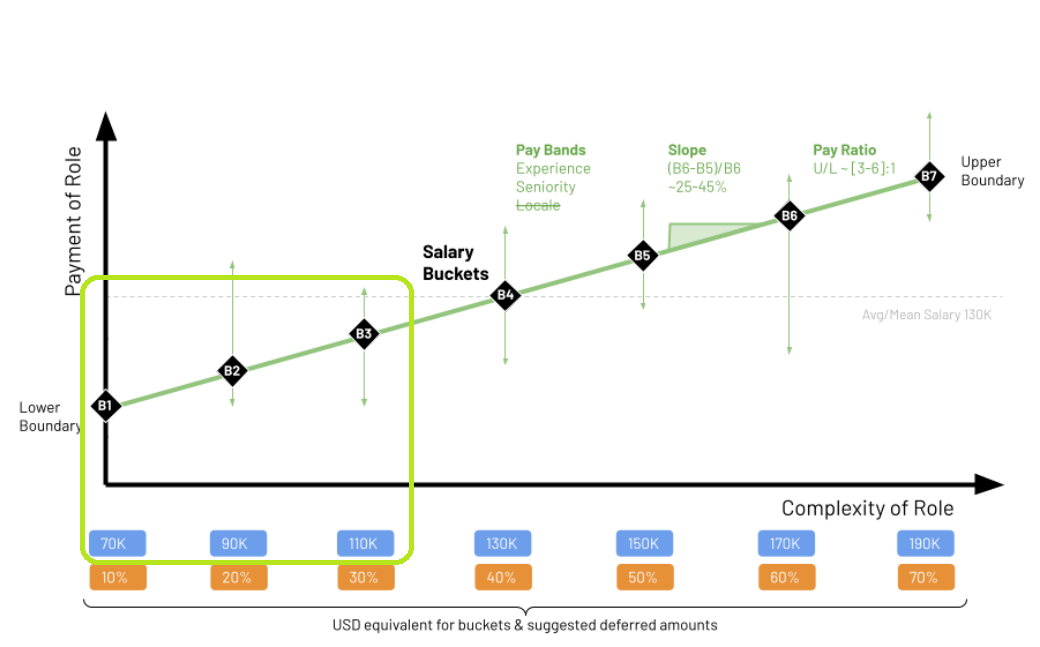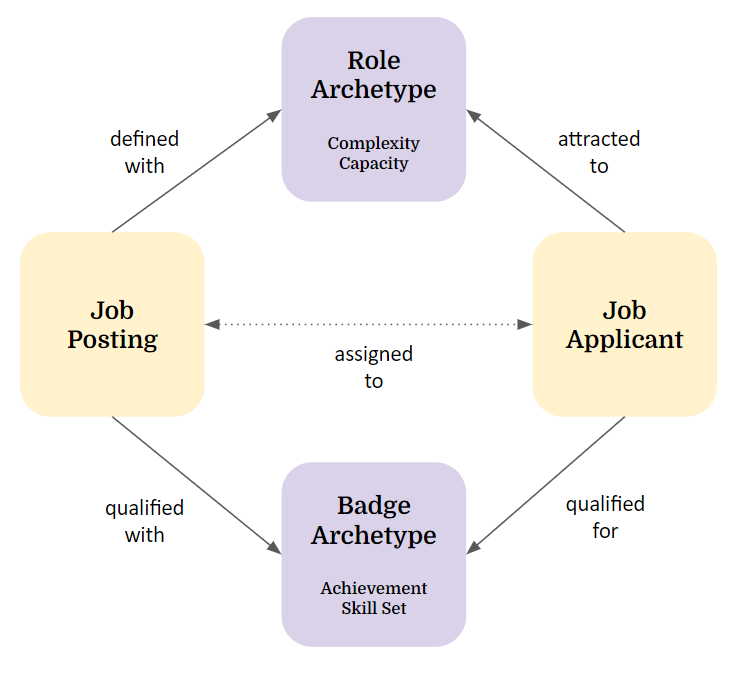Samara's Compensation Model
Premise
Compensation
The compensation in Samara is based on a token mix that consists of of SAMARA (equity/value,value token), SVOICE voice(voting token,weight HUSD token), -HUSD (USD equivalent token), and possibly SEEDSSeeds (currency, if the organization has a reserve).reserve exists. This mix is determined by a "formula" that converts the USD Equivalent into the right mix of tokens. See the Samara Token page for more details on each of the tokens in use.
Compensation for contributors
Currently every contributor to Samara is compensated in the following way:
- 1$ contribution can be compensated with either 1 SAMARA or with 1 HUSD (these are the only two token types currently available in Samara)
- Contributors request the HUSD they need to cover their fiat
needscurrency needs. (This is intended to allow people to free up their energy andbe abletime to contribute to Samara by covering the living costs they would otherwise have to invest time and energy elsewhere toget)cover.) - The rest of their contribution (Total contribution - HUSD
amount)amount requested) is compensated in SAMARA, which is then multiplied according to the current multiplierin place at a specific time ContributorsThechoosingmultiplier exists togetrewardcompensation in SAMARA andContributors taking on the risk oftheuncertain futureuncertainvalue of SAMARAare compensated more (based onover themultiplier)known,forimmediate exchange value of HUSD. This multiplier will gradually decline as Samara’s value as an organization increases, inherently increasing thetrustvalue of the SAMARA equity token andwillingnessreducingtoriskacceptinSAMARAchoosinginsteadcompensationofinHUSD which can be used immediately.SAMARA.
Example:
- One contributor has a $5,
000$000 contribution in a lunarcyclecycle.andTheyheonlyneedsneed $1,000$000 HUSDasto cover their living expenses that must be paid in fiatneeds.currency. - The $5,
000$000 contribution ismadecompensatedbywith $1,000$000 HUSD and 4,000SAMARA;SAMARA. - The 4,000 SAMARA are
beingmultiplied by the current multiplier (1.8atasthisofstage), so4/16/21). 4,000 x 1.8 = 7,200 SAMARA - $5,000 contribution --> $1,000 HUSD + 7,200 SAMARA
Compensation for investors
1$$1 investment = 1 SAMARA, multiplied according to the multiplieractive in place at a specific time.multiplier.
Current distribution of tokens to contributors and investors
The current way Samara allocates tokens is through this spreadsheet (Compensations sheet)Spreadsheet . This is far from ideal but works as a record of all the contributions to Samara.Samara until the DHO is operational. It details historical contributions and tokensearned forcompensation, each month or for a specific lunar cycle,including and the exact amounts of SAMARA, HUSD and SVOICE.
Salary Bands
Defining a salary for a role is an extremely difficult task to do. There are many, many variables playing a partinvolved in the decision to findfinding a fair and equitable salary for everyone in the organization.
For these early stagesstages, Samara is using three salary bands, namely B1 ($70k/year), B2 ($90k/year) and B3 ($110k/year). These bands are directly connected with the commitment levels, B1 for up to 49%, B2 for 50% - 79% and B3 for over 80%. 
Commitment
We define commitment as “mindshare” (- not how many hours per week you work inon an assignment).assignment. ForThis example,is a commitmentnew, levelchallenging ofconcept 100%for ismany equivalentpeople used being valued by the hour and living in a society largely organized around the 40 hr M-F work week.
Here’s how we think about mindshare:
- For a given time period, like a lunar cycle, there exists a limit to
havingtheyouramountawareness beingof fully present and focusedonawareness you can provide to things other than what you need to give attention to for sustaining your health and wellbeing. This usually includes things like sleep, rest, relaxation, exercise, meditation, time in nature, fulfilling personal and familial responsibilities, and honoring commitments to yourself and your community. - Your limit can only be determined by your own honest reflection.
- If you commit all your awareness under this limit, you would commit 100%. • If reserve half of this awareness for a
singlepart-timeassignment.job,
education, or hobbies, you could then commit up to 50% to your work with Samara. - Finally, Commitment is provided to specific quest(s) and/or role(s) rather than generally to Samara. For example, you may decide to commit 30% to Quest A over one lunar cycle, but also commit 50% to Quest B, lasting 3 lunar cycles. While both A&B are active, your total commitment to Samara will be 80%, but your compensation level may be different for A&B. If you don’t take on another quest once A expires, your total commitment to Samara will be 50%.
Members propose their commitment at the start of the cycle period and self-assess their actual contribution level after the cycle period endedends. andAs canwell, thenSamara adjustconducts the levels up or down to reflect personal changes in the contribution or based on the results of thea Collective Evaluation process.
The Collective Evaluation process isEvaluation, a Communitycommunity building exercise where at the end of a cycle the team comes together to assess each-othereach contribution.other’s’ contributions – both their perceived quality and demonstrated commitment level.
This Collective Evaluation is not intended to dispute contributors’ honesty or create a hidden, hegemonic equation that determines the “true” relationship between amount of visible “work” and commitment level. It is intended to provide an opportunity for teammate feedback to be incorporated into self-reflection, and for invisible work, effort, awareness to be made visible and receive social recognition. Contributors retain complete autonomy to keep their original commitment level, or adjust it up or down after Community Evaluation.
Minimum commitment in Samara is 30% for regular assignments. Please note that your total level of commitment for the sum of all assignments cannot exceed 100%.
Future models for role and badge archetype
The goal is to match qualified applicants with open job postings. In traditional job markets, this process is overtaxing, one-sided, prone to trial & error and a guessing game between pretense & perception. In a decentralized human organization, we are using role archetypes as attractors for applicants and badge archetypes as qualifiers for applicants to optimize the matching process and to reduce biases.bias. Role archetypes represent the complexity of the job and the capacity of the organization to fill insupport positions (e.g. the organization might have room for 5 storytellers at a complexity level of B3). Badge archetypes represent achievements and skillsets of applicants. Both archetypes are used to find the right applicant for the assignment.
Salary Bands - future model
- $70k
paannual salary converted into an average hourly rate @ 40hr week - minimum 30%+ time
commitment)
Complexity/Intensity byRecognition the community.
- ($70k) +$20k
- minimum 50%+ time
commitment)

